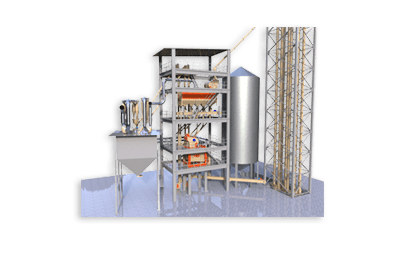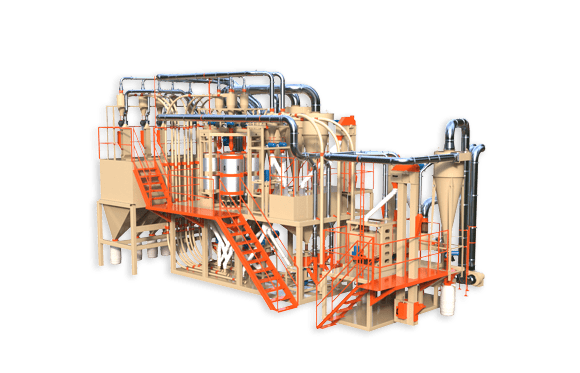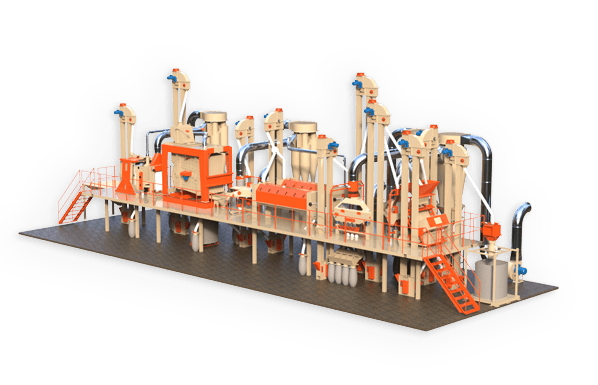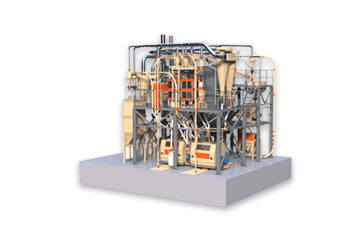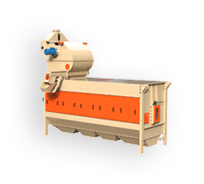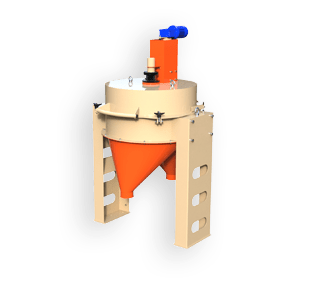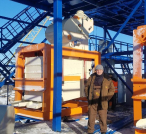Soriz and its capabilities in improving the quality and expanding the range of food concentrates, using new grain crops as the main raw material)
Moscow. Magazine “Food Industry” No. 9 (September) 2000
The role of food concentrates is constantly growing, due to a number of their advantages. Food concentrates have high biological value, good taste, ease of transportation, storage, sales and consumption. But the main reason for the growing popularity of food concentrates is their ability to save the most valuable human resource – time.
Despite their diversity, the vast majority of food concentrates are produced on the basis of grain raw materials. Over the past 10 years in European countries, the production and consumption of such concentrates has increased by 50%. In the USA, consumption of concentrates such as breakfast cereals is 5-7 kg per year per capita. Every year 15-20 new types of grain-containing concentrates enter the world market. Such rapid promotion of products would not be possible without improving their quality, which, even with the introduction of new technologies, machines and formulations, is strictly linked to ensuring the quality of the grain raw materials used.
In the former USSR, about 350 thousand tons of food concentrates were produced annually. However, recently in the CIS countries their production, including grain-containing ones, has greatly decreased. Even manufacturers equipped with Western technologies and machines, such as those using cooking extrusion, using modern packaging and new means of promoting products, have suffered the fate of reduced production. Being relatively inexpensive, our food concentrates cannot withstand competition not only in foreign markets, but also make room in domestic markets for imported products due to low quality.
The current situation is due to the fact that domestic agriculture and processing, being the main supplier of affordable raw materials in the CIS markets, are experiencing a deep crisis and are unable to provide the required quality of raw materials, and often their quantity, which has an extremely negative impact on the quality of the finished product. The problem of raw materials is especially acute in the production of concentrates, including rice and corn. There is very little domestic rice and its cost corresponds to imported rice. In the overwhelming majority of cases, corn and cereals made from it rarely meet the requirements of even the “union” GOST standards for the food concentrate industry, not to mention Western standards. In addition, in the last few years, especially in summer, there has been a shortage of even such corn and cereals.
The causes of the crisis in the production of rice, corn and their processed products represent a complex from technical and economic issues to the individual characteristics of these crops, soil and climatic conditions, ecology, and their analysis is not included in the scope of this article. However, it is quite obvious that providing the food concentrate industry with high-quality and affordable raw materials from domestic rice and corn in the coming years is not realistic.
Understanding the relevance and commercial importance of the work being carried out, our search for a solution to the identified problem was aimed at the possibility of using new types of grain raw materials for the production of food concentrates. Using the results of recent work in the field of breeding and agricultural technology, with the assistance of specialists from a number of scientific institutions and industrial enterprises, we were able to solve the problem by using a new grain crop called soriz. Both the technology for obtaining the cereal itself and measures for adapting food concentrate technologies to new raw materials in the production of traditional products and the creation of new ones were developed* and implemented. Industrial testing at a number of Ukrainian enterprises has shown that the resulting new raw materials, to the extent of their manufacturability, high physico-chemical and other qualities, as well as reasonable prices, can not only be successfully used, complementing rice and corn, but also completely replace them in most recipes, improving the quality of finished products.
Soriz – created by distant hybridization of bread sorghum and wild rice grain forms with the targeted isolation and consolidation of beneficial qualities. The grain of soriz has a round-oval shape with dimensions of 4.0-3.5 mm, a smooth, light yellow shell, firmly connected to the kernel. Distinctive features of this grain are high hardness and glassiness, as well as high starch content.
The main technological and physico-chemical characteristics of grain are given in the table.
| Nature, g/l |
Weight 1000 grains, g |
Vitreousness, %; |
Hardness in standard. units |
Protein, % |
Starch, % |
Fat, % |
Fiber, % |
Ash content, % |
| 790-850 | 25-36 | 75-95 | 28-35 | 12-15 | 62-68 | 4-5 | 1.6-2.7 | 1.3-1.9 |
The technical conditions (TU U 22463769-002-99) provide for the production of ground and polished sory grains (kernel), as well as crushed three-dimensional ones. The produced cereal, depending on the type of grain, is distinguished by a pale or bright sunny yellow color (a marker feature of soriz), contains 9-12% protein, 75-80% starch, surpasses all other cereals in potassium and manganese content, and in general content of essential amino acids – wheat, corn, rice. The main value of soriz cereal is that the specially synthesized specific structure of the starch of the grain, which is one of the distinctive features of each specific crop variety, ensures its universal use in the production of food concentrates.
High-protein cereals from culinary grains in the process of hydrothermal treatment with cooking until tender are characterized by a swelling capacity of 150-190 gvcooking coefficient of 4.9-5.1. With optimal water content, cereals are cooked without destroying the starch grains and releasing free starch onto the surface of the grains. After cooking, the cereal acquires a crumbly consistency, a snow-white color and a taste close to rice.
The cereals of culinary varieties of soriz, like rice, contain a lot of easily digestible carbohydrates, little fiber and have a minimal effect on the digestive glands, which allows its use for children’s and geriatric dietary nutrition. Soriz grain is recommended for the formulation of concentrates for first and second courses, as well as for the production of special-purpose concentrates.The use of crushed soriz cereals as the main grain raw material for the production of breakfast cereals using the extrusion method is particularly effective. The specific structure of the starch of certain varieties of soriz allows the cereal extrusion process to be carried out at minimum temperatures, pressure and humidity, ensuring a guaranteed high degree of swelling. This is especially important when working on short-screw extruders in the production of stick-type products. The possibility of using “soft” processing modes eliminates the formation of indigestible secondary decomposition products while providing the extrudate with a highly porous, delicate, crispy texture with small, uniform pores and smooth edges.
The introduction of cereals or soriz flour into the recipes of multicomponent mixtures when producing shaped products by cooking extrusion makes it easier to obtain the required geometry of the extrudate, giving it softness and airiness. The described effect is especially necessary when using high-protein additives and low-starch raw materials, characterized by low swelling coefficients, as part of the components.
Significant advantages of soriza cereal include the fact that its extrudate does not contain a pronounced grain flavor characteristic of most grain crops and has a neutral white color. This allows the use of various flavoring additives and dyes without disturbing their taste and color perception in the finished product.
Soriz grain is quite technologically advanced in the production of ready-to-eat sweet petals, both with traditional technology using cooking machines, and with cooking extrusion. Technological production modes contain their own characteristics, but they are quite easily implemented on any equipment for the corresponding purpose. After frying modes, the finished petals acquire a yellow-coffee color, porous, crispy consistency, which provides them with good taste and presentation.
In the production of flakes, hydrothermal processing of cereals is carried out by steaming at a pressure of 0.2 MPa for 5-6 minutes. After flattening, drying and cooling, the flakes have a size of about 7 mm, white color, smooth, glossy surface. The cooking time for such flakes before use is 2-3 minutes.By expanding cereals by heating under excess pressure, for example in a V-35M type apparatus, it is possible to produce air grains for subsequent panning with caramel, peanuts, etc. The ground grain (kernel) “exploded” in this way takes the form of balls with a diameter of up to 9 mm with a depression in the area of the embryo and can be combined to taste with any additives for pancakes.
Heating at atmospheric pressure of certain varieties of soriz grain leads to their swelling with the endosperm expanding like “popcorn”. The grains increase in size up to 20 times with a content of non-expanded or slightly expanded grains within 2-3%. Thus, grain of popping varieties provides another area for the use of soriz.
Due to the youth of culture, all its advantages, possibilities and limits of use have not yet been fully determined. But the use of soriz cereals for the production of food concentrates, based on research and production testing, already today allows not only to improve the quality and diversify the range of products, but also to give them elements of market novelty – an irreplaceable attribute of success.


